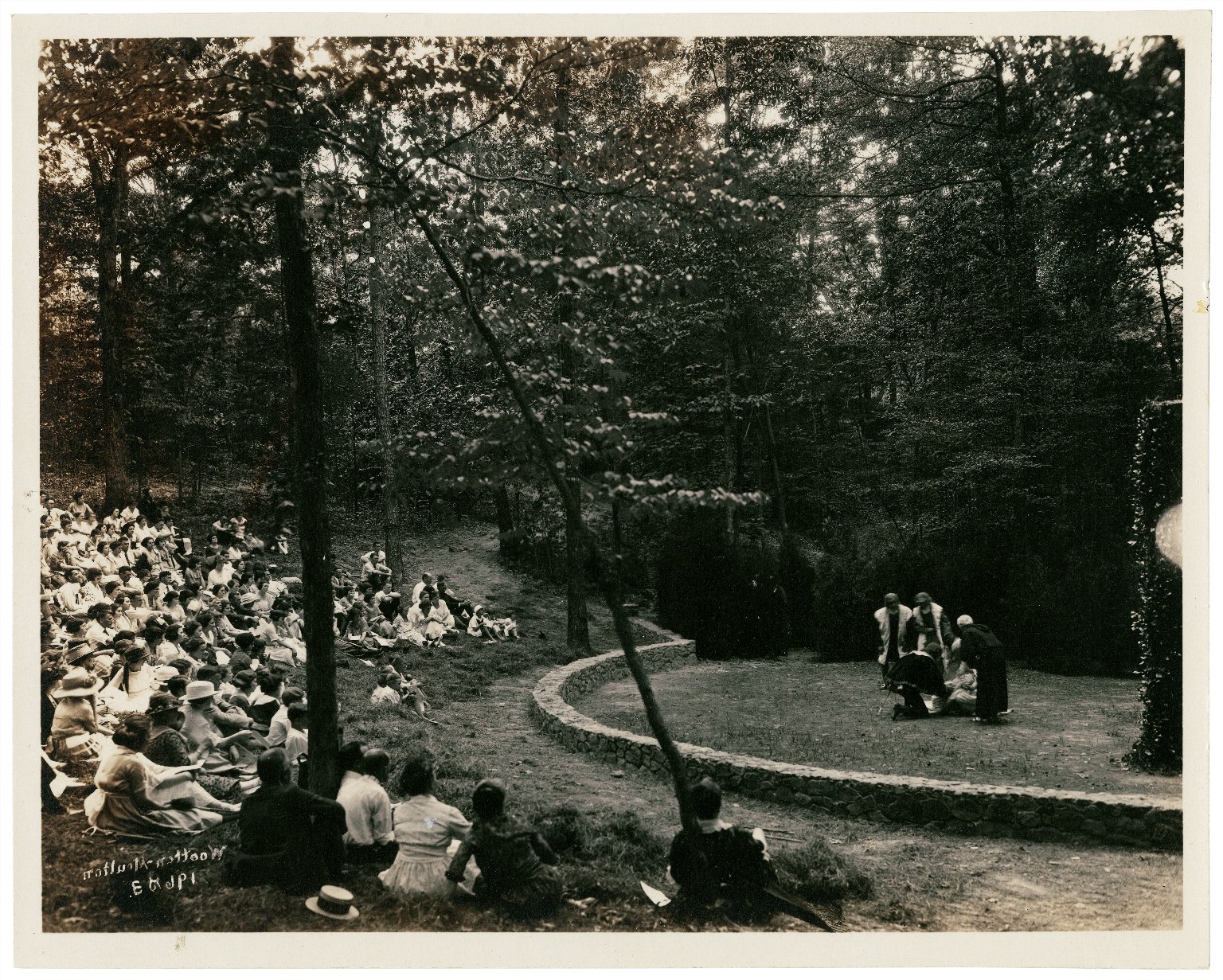
In a thoughtful essay for the Atlantic a few weeks ago, Navneet Alang wrote about the desire to be heard. Writing of Alexa’s Secret Keeper app, which records password-protected “private thoughts,” Alang notes:
“The appeal of the app is obvious – it lets you get something off your chest. It also suggests that sometimes, who listens isn’t important; what matters is simply saying it out loud.”
Alang muses on the ways our digital amphitheaters manifest the desire to be heard and understood, even if the “unsullied connection” we seek is only forged with an algorithm. Michael Sacasas responded to Alang by re-framing the question of desire as a quest for “re-enchantment,” one which the material world fails to fulfill and the digital world promises to fulfill through flattering faux-therapy.
“I’ve entertained the idea that the combination of technologies that promises to animate our mute and unresponsive material environment–think Internet of Things, autonomous machines, augmented reality, AI–entice us with a re-enchanted world: the human-built world, technologically enchanted. Which is to say a material world that flatters us by appearing to be responsive to our wishes and desires, even speaking to us when spoken to–in short, noting us and thereby marginally assuaging the loneliness for which our social media posts are just another sort of therapy.”
Sacasas’s use of the word “enchantment” connotes both the enthusiasm for the Internet of Things by advocates like David Rose (Enchanted Objects: Innovation, Design, and the Future of Technology) and the more childlike way of looking at the world. Both Alang and Sacasas point to the ways in which our technologies act as a “canvas of our desires” (Alang), especially vulnerable and primal ones, a theme Sherry Turkle also explores.
Technology intervenes not only in the office and the bedroom, but the playroom in the attic, long abandoned.
I picked up Searching for Dragons in the library this morning, the second of Patricia C. Wrede’s Enchanted Forest Chronicles. I’ve reread these books for more than ten years now. The best part of the series is the forest itself: it changes on the characters, morphing in accordance with an internal logic that evades the princess Cimorene and her friends, even as they respect it. The Enchanted Forest belongs to a collection of animated environments in the long canon of children’s stories, from the talking candlesticks of Disney’s Beauty and the Beast to the shifting staircases of Hogwarts, the haunted rooms of Green Knowe and the revelatory knick-knacks (also haunted) of Rest-and-be-thankful.
I grew up in love with the idea that a house or a garden or a wood could know me and know better than me. That enchantment, as I get a little older, looks more and more like a form of desire for communion; a deeper layer of the desire for a transcendent home.
The longing for home, expertly analyzed by others in the context of a fragmented and rootless millennial experience, is not limited to human inhabitants: it envelops and extends beyond them. If it is more a longing of the imagination, given that we don’t seem to live in dimensions which permit objects to exert agency the way humans can, then it is one which increasingly seems possible to fulfill through advances in tech. The Enchanted Forest looks like it may be less elusive and more mechanical; upgraded for adults.

It was a Garden, not a forest, a landscape, that Milton envisioned in Paradise Lost, an environment characterized by John Gillies as capable of being “actively hostile to the species which occupies it, challenging that species to adapt or perish… the Miltonic environment responds ontologically to the spiritual character of its guest species: it knows its occupant.” [1] Eden is the perfect home in no small part because of the harmonic interdependence of its creatures, the way the landscape knows the people who live there. It is this harmonic intimacy which underscores Satan’s expression of grief in Book IX, just before he carries out the temptation of Eve.
With what delight could I have walkt thee round,
If I could joy in aught, sweet interchange
Of Hill, and Vallie, Rivers, Woods and Plaines,
Now Land, now Sea, and Shores with Forrest crownd,
Rocks, Dens, and Caves; but I in none of these
Find place or refuge; and the more I see
Pleasures about me, so much more I feel
Torment within me, as from the hateful siege
Of contraries; all good to me becomes
Bane… (Paradise Lost IX.114-123)
“Interchange” can mean “Alternate or varied succession in time, order, or space” (like “a variety”), but it can also mean “the act of exchanging reciprocally; giving and receiving with reciprocity.” [2] What Satan mourns is the all-too-evident beauty of the landscape but his lack of participation, of exchange with it. In Milton’s monist universe, one which does not embrace a dichotomy of flesh and spirit, the division between “things” and “not-things” (creatures, spirits, emotions, moralities, imaginative desires) are much less distinct.
Satan craves the liveliness of home which Eden is capable of manifesting even as he finds “no place or refuge” in the environment. And so he speaks at length about the isolation of his existence to a world which does not respond to him. There is no Alexa; there is only silence.
As Sacasas observes, much of our desire for enchantment emerges as a form of self-reassurance; we look for the magic mirror of Snow White’s stepmother to tell us we’re beautiful, rather than a castle which can challenge our very sense of self. Yet the power of that technological pull – the interest we have in creating Alexas and talking to Siris – speaks to the many facets of the desire, that it draws from a wishing well older and deeper than we may realize when we pull up Twitter on a Saturday afternoon. Our longing for “interchange” in the ecological, animate, and virtual systems in which we seek to dwell is one that is difficult to avoid, and perhaps it is unwise to do so.
I updated to iOS10 a few weeks ago, lured by the promise of Evernote integration into iMessage (this remains an unused but now prized functionality.) I’ve been thrown by the fact that the new Home app bumped Health to the side; a re-configuring of my most familiar digital space. For Apple users now, Home is the place where one participates seamlessly in the Internet of Things. I don’t have any eligible devices for Home, but I keep on clicking on it by instinct, trying to get to Health.
***
[1] John Gillies. “Space and Place in Paradise Lost,” ELH 74:1 (Spring 2007), 27-57. p. 40
[2] “interchange, n.” OED Online. Oxford University Press, September 2015.

